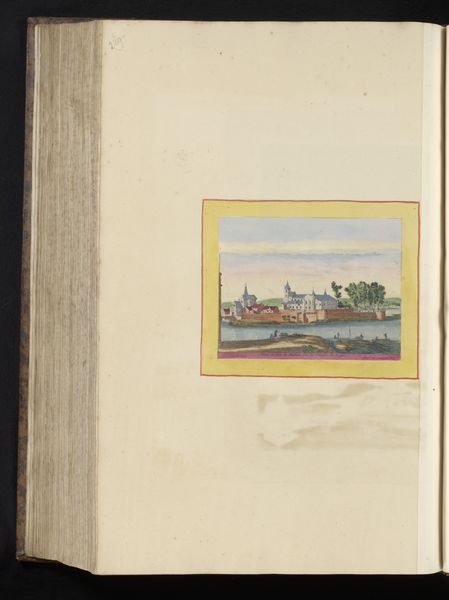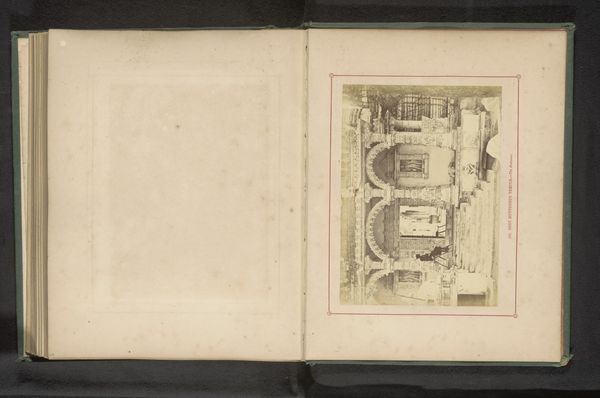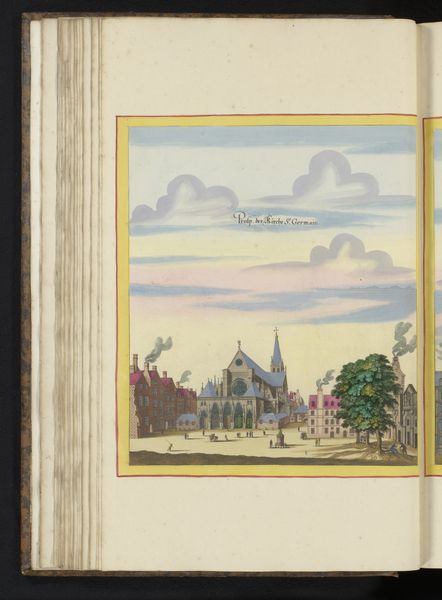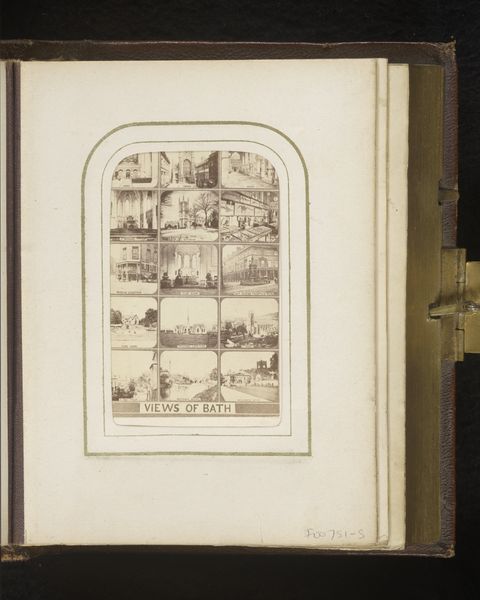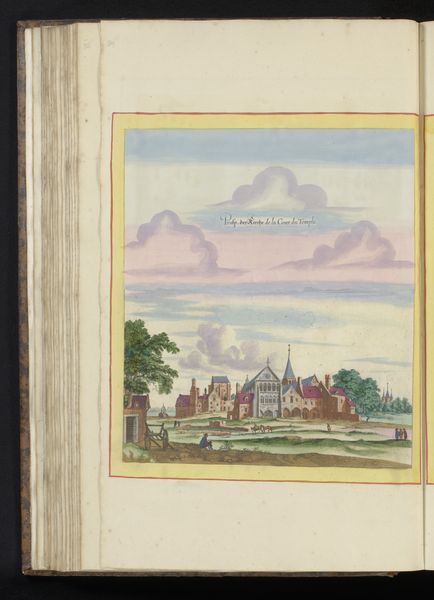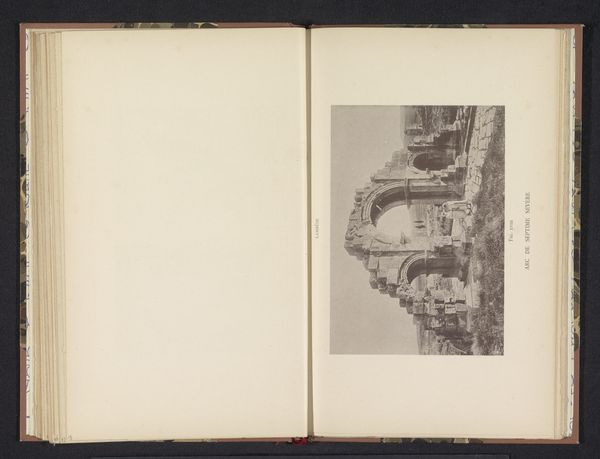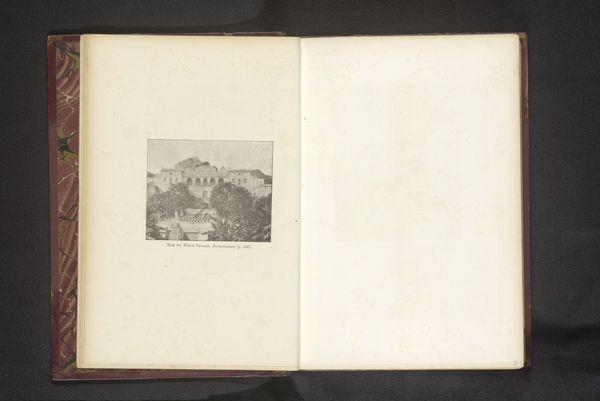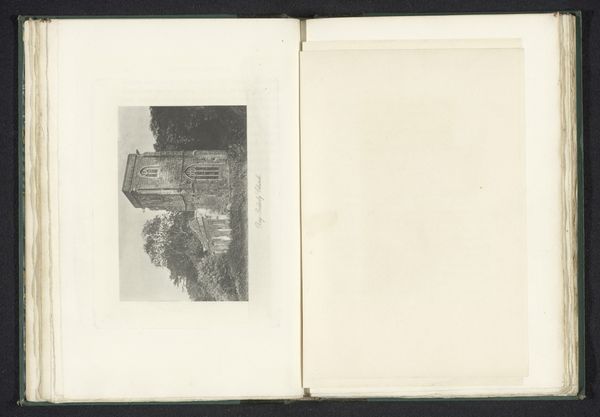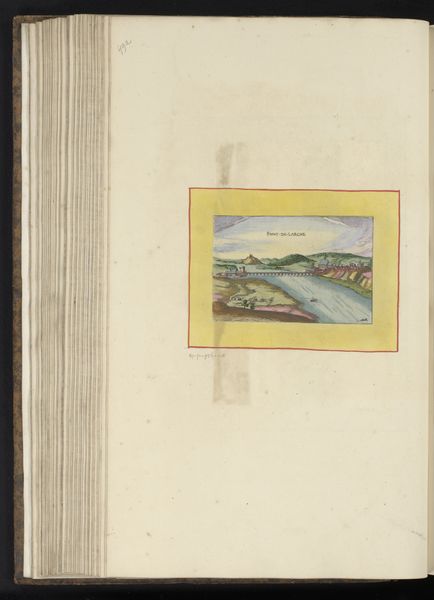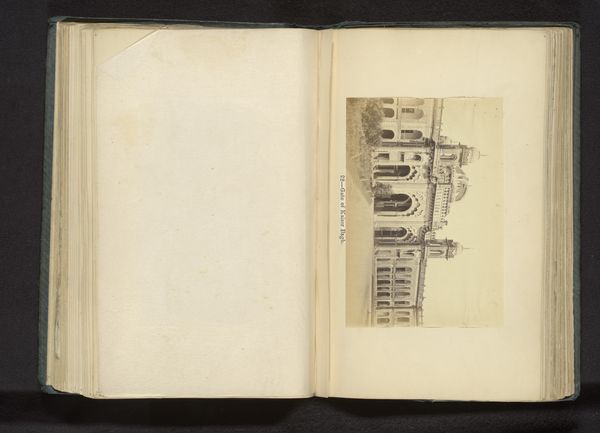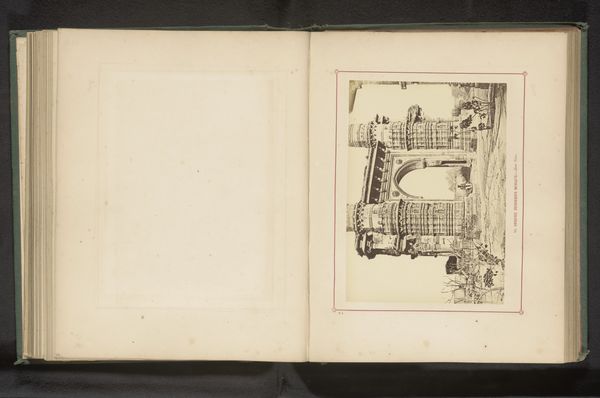
Gezicht op de kerk van de Jezuiten in de rue Pot-de-Fer te Parijs 1631 - 1661
0:00
0:00
drawing, coloured-pencil, print, paper, ink, engraving
#
drawing
#
coloured-pencil
#
baroque
#
ink paper printed
# print
#
paper
#
ink
#
coloured pencil
#
cityscape
#
engraving
Dimensions: height 81 mm, width 111 mm, height 535 mm, width 335 mm
Copyright: Rijks Museum: Open Domain
Editor: So, here we have Israel Silvestre’s "View of the Jesuit Church in the Rue Pot-de-Fer in Paris," dating from between 1631 and 1661. It's a drawing and engraving using ink and coloured pencil on paper, and it’s currently held at the Rijksmuseum. It’s incredibly small within the page itself, almost like a postage stamp. What jumps out at you about this piece? Curator: Well, focusing on the materiality and production, notice how the technique—engraving—allows for the wide dissemination of this image. This wasn’t a unique painting meant for a single collector. Instead, we see printmaking democratizing access to city views. Editor: That's interesting. So the value isn't necessarily in the "originality" of the piece? Curator: Precisely! The value lies in its reproducibility and distribution. It’s about documenting and communicating a specific representation of Paris to a wider audience. Think about the socio-economic context: Who could afford prints like these, and what kind of information were they consuming? What does the labor of the engraver tell us about artistic hierarchies at the time? Editor: That makes me wonder about the specific type of paper used, its availability, its cost... and how that might have limited access, even with the print. Was the Jesuit order actively commissioning works of art such as this in an attempt to convey some type of cultural/religious influence in that specific neighborhood of Paris? Curator: Excellent question! Investigating the paper’s origin and quality and Silvestre’s relationship to the church – were they a patron, perhaps? – could give us insights into the complex networks of production, consumption, and ideological messaging that this small cityscape represents. It's about understanding how materials, labour, and social power intersect. Editor: I never thought I'd be looking at an old drawing of a church and considering concepts like “consumption” and “labor.” It makes me want to examine it not just for its aesthetic appeal but as a material object embedded in its time. Curator: Exactly! That's the crux of it. We see it, not only in the depiction, but in every single material and technical decision that allowed its proliferation, telling us about Paris, the Jesuits, and printmaking.
Comments
No comments
Be the first to comment and join the conversation on the ultimate creative platform.
